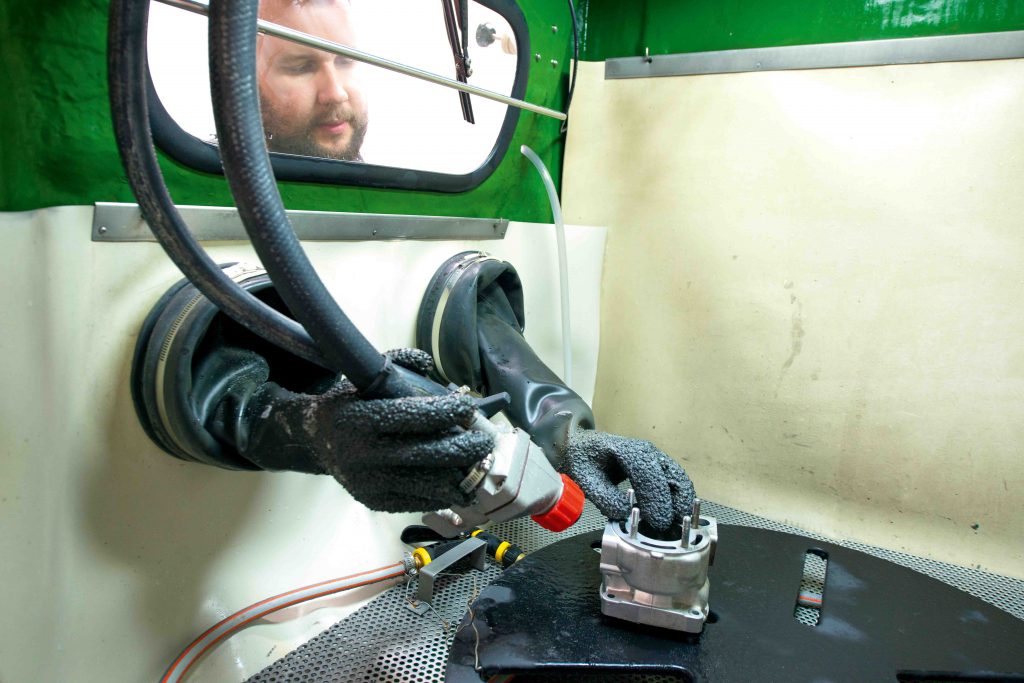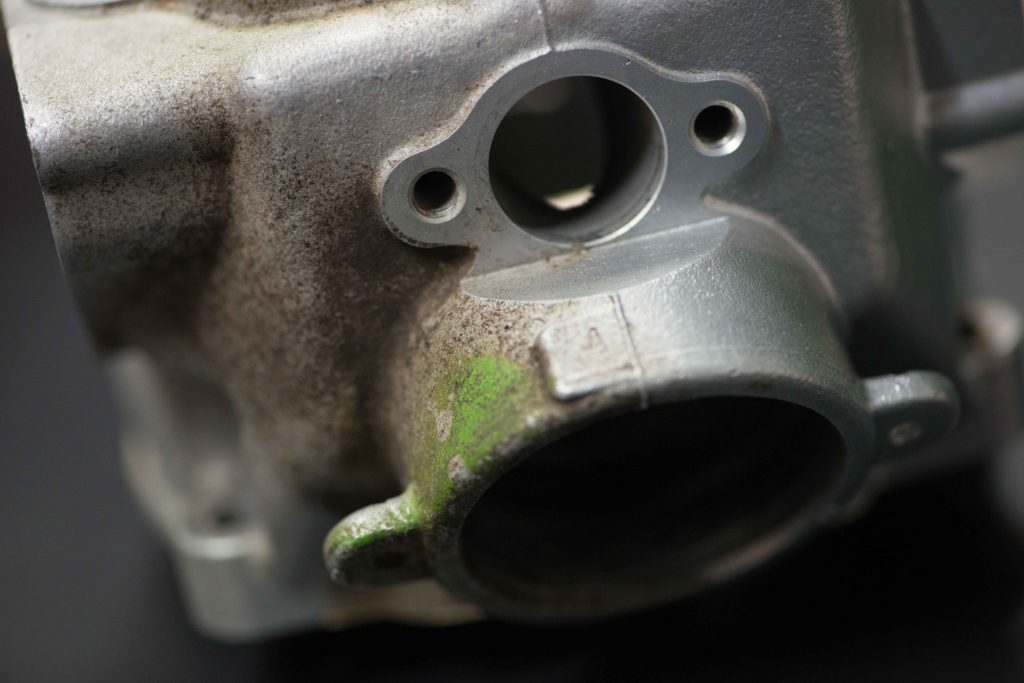Vintage motocross is making a strong resurgence, with world-class restorations being done right here in Oz. A technique used to restore these classic machines is hydroblasting.
The process of hydroblasting cleans using the flow of water rather than using impact, like dry sandblasting. The water acts as a lubricating cushion for the soda-lime glass beads that are used, protecting both the blasting media and the component from excessive wear or breakdown.
VMX racer and restorer Mark from Pioneer Finishes in QLD was happy to share his knowledge. “You can achieve a variety of finishes, simply by selecting different grades of glass bead,” Mark exclaims.
Aside from looking great, the finish on a hydroblasted component is easy to maintain and is environmentally friendly with no toxic or harmful chemicals used and no dust left behind unlike sand blasting.

BOMBARDED
The component‘s surfaces are bombarded by a high-volume supply of water and glass bead media in the hydroblaster’s “sump”. It is pumped with a specially designed pump to the process gun at a high-volume flow. To accelerate the flow of glass beads, compressed air is introduced at the process gun.
Critical measurements are not altered by hydroblasting. There is also no embedded contamination from the glass beads. Hydroblasting parts can increase component life by stress-relieving the metal. It does this by sealing imperfections and creating a uniform surface of alloy.
The glass bead media helps to achieve the right balance of stress relief without over-stressing the alloy and causing damage. Hydroblasting is also used on marine and aviation engine components such is it’s versatility.
Bike restorers can use hydroblasting on hubs, brake calipers, alloy frames, exhausts, triple-clamps, suspension components, engine and gearbox components and even rubber and plastic parts. “A major benefit of using the process on heavily oxidised engine components is also the ability to identify underlying stress fractures.” Mark says.

WHAT IS NEEDED
Hydroblasting machines can handle components up to about one metre square, with extensions for things like aviation propellers. Motorcycle components are often disassembled before cleaning and also unlike sandblasting, no sensitive areas need to be taped over.
Matt Boyd
See the full feature in issue #438 of ADB Magazine.
